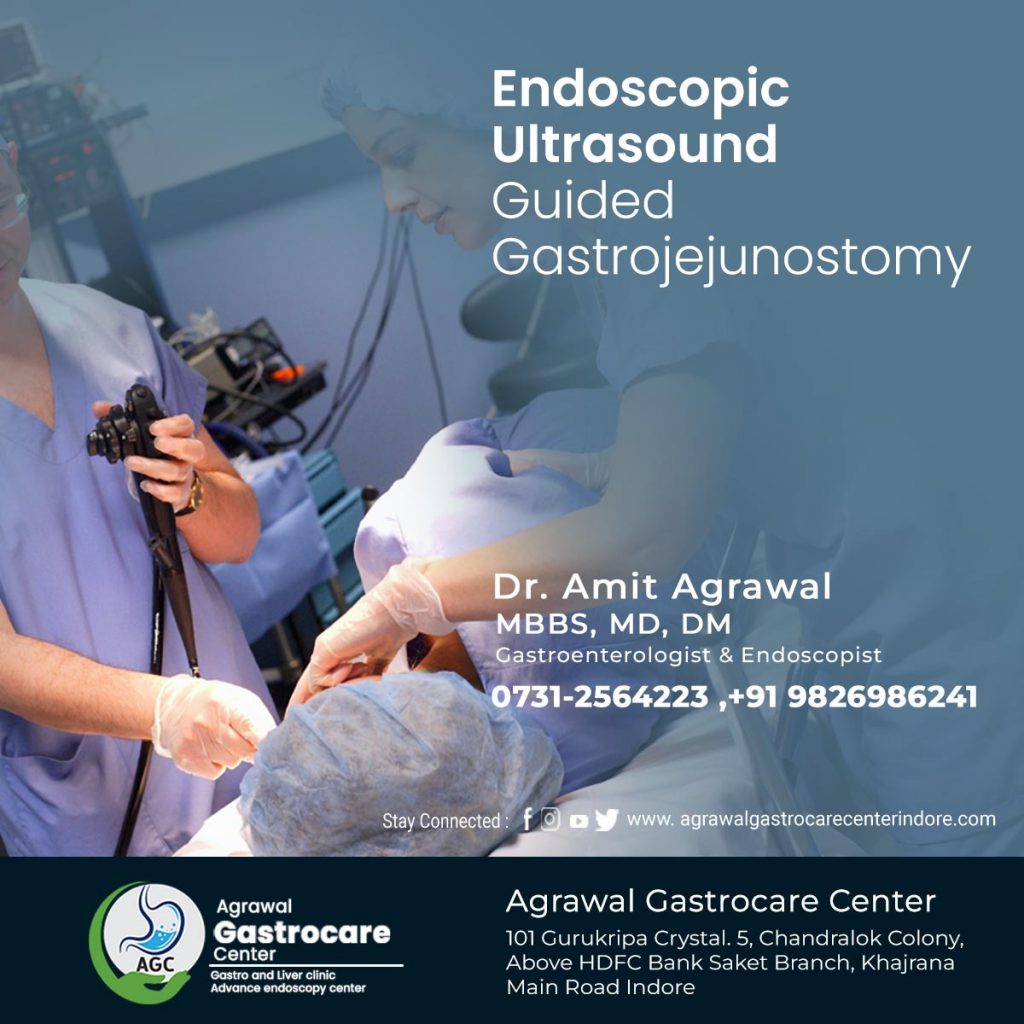Endoscopic Ultrasound-Guided Gastrojejunostomy – Agrawal Gastrocare Center Indore
Endoscopic ultrasound-guided Gastrojejunostomy
Gastrojejunostomy is a surgical procedure that creates a connection between the stomach and the jejunum (a part of the small intestine). This procedure is often performed to bypass an obstruction or enable the passage of food from the stomach to the intestines. Traditionally, gastrojejunostomy required open surgery or laparoscopic techniques.
However, recent advancements in medical technology have led to the development of medical procedures, such as endoscopic ultrasound-guided gastrojejunostomy. In this blog post, we will explore this innovative procedure, its benefits, and how it is revolutionizing the field of gastrointestinal surgery.

Advantages of Endoscopic Ultrasound-Guided (EUS) – Gastrojejunostomy (GJ):
Endoscopic ultrasound-guided gastrojejunostomy offers several advantages over traditional surgical techniques:
- Precision and visualization: EUS provides real-time ultrasound imaging, that allows the doctors to visualize and navigate the GI tract more accurately during the procedure.
- Reduced complications: The risk of complications, such as infections and wound-related issues, is lower compared to open surgery.
- Suitable for high-risk patients: EUS-GJ can be performed on patients who are at high-risk for traditional surgery due to underlying medical conditions or previous surgeries.
- Shorter hospital stays: With minimal invasiveness and faster recovery, patients undergoing EUS-GJ often have shorter hospital stays compared to open surgery.
How Is It Performed?
Here is how the Endoscopic ultrasound-guided Gastrojejunostomy is performed by expert physicians:
- An endoscope, a thin and flexible tube with a camera and an ultrasound probe at its tip is inserted through the mouth and into the stomach.
- Ultrasound imaging helps visualize the anatomy of the stomach and the adjacent structures.
- A small puncture is made in the stomach wall under ultrasound guidance, creating an entry point for the endoscope.
- A specialized device, such as a stent or a needle catheter, is guided through the puncture and into the jejunum.
- The stent or catheter is deployed to create a connection between the stomach and the jejunum.
- Once the connection is established, food can pass through the new opening, bypassing any obstructions.
Dr. Amit Agarwal
Director & Gastroenterologist Consultant
Agarwal Gastrocare Center Indore


